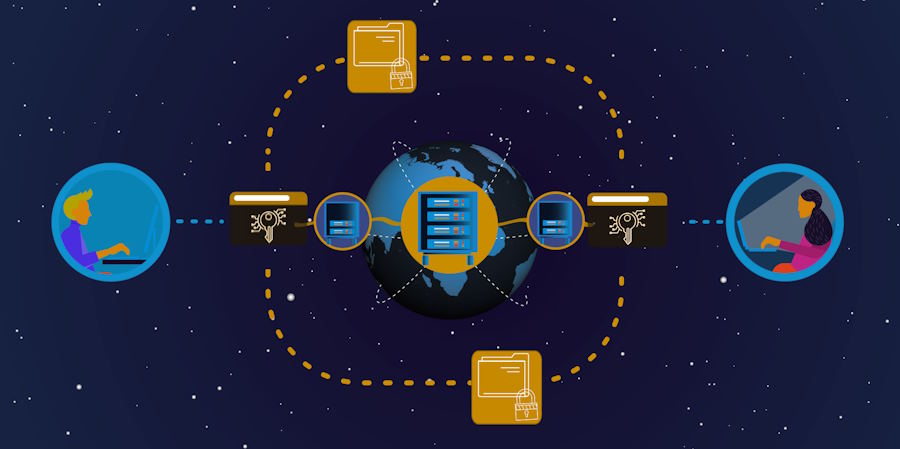As we stand at the precipice of the post-quantum era, traditional cryptographic methods, once stalwarts of data security, face an existential challenge posed by the rapid advancement of quantum computing. Enter quantum encryption, a groundbreaking paradigm that harnesses the enigmatic principles of quantum mechanics to usher in a new era of impregnable security. As we venture into the next level of digital security, quantum encryption emerges not only as a solution to contemporary challenges but also as a visionary pathway to redefine the very fabric of secure communication in our interconnected world.
Quantum Encryption as the Solution
Overview of How Quantum Encryption Works
Quantum encryption, a pinnacle of modern cryptographic science, operates on the principles of quantum mechanics. Its foundation lies in the secure distribution of cryptographic keys using quantum key distribution (QKD) processes. During QKD, quantum bits or qubits are sent between parties, exploiting the quantum phenomena of superposition and entanglement. This process ensures that any unauthorized interception would inevitably disturb the qubits, alerting both parties to the breach.
Unbreakable Nature of Quantum Encryption
The unbreakable security of quantum encryption arises from its intrinsic properties. Quantum principles, like the no-cloning theorem, make it impossible to copy an unknown quantum state without detection. Heisenberg’s uncertainty principle, which states that measuring a quantum system disturbs it, safeguards against eavesdropping attempts. Even the most advanced eavesdropper would inadvertently alter the qubits’ states, revealing their presence.

Quantum Key Distribution (QKD) Protocols and Their Security Advantages
Two prominent QKD protocols stand out: the BB84 protocol and the E91 protocol. The BB84 protocol leverages the transmission of qubits encoded in different bases, while the E91 protocol capitalizes on entanglement to ensure key secrecy. Challenges such as qubit loss and environmental interference have impeded QKD implementation. However, researchers are devising ingenious solutions, including error correction codes and quantum repeaters, to extend the reach and reliability of QKD systems.
Implementations and Real-World Applications
Current State of Quantum Encryption Technology
The landscape of quantum encryption is rapidly evolving, with researchers making substantial strides in translating theoretical concepts into practical implementations. Quantum key distribution (QKD) systems have been successfully demonstrated, enabling secure communication over short distances. However, challenges remain in achieving long-distance QKD and developing quantum-resistant encryption algorithms.

Practical Challenges in Implementing Quantum Encryption Systems
Implementing quantum encryption faces practical hurdles. Firstly, hardware requirements demand highly specialized equipment capable of generating and detecting individual qubits. Secondly, environmental factors like temperature fluctuations can disrupt delicate quantum states, necessitating stringent control measures.
Quantum Encryption’s Role in Securing Sensitive Communications
Quantum encryption’s potential applications span various sectors. In the governmental and military spheres, secure communication is paramount. Quantum encryption provides a shield against sophisticated cyberattacks and ensures confidential information remains classified. Financial institutions, dealing with vast amounts of sensitive data, can utilize quantum encryption to fortify transactions and protect against emerging threats. In healthcare, where patient privacy is sacrosanct, quantum encryption can safeguard medical records and telemedicine interactions. Moreover, individuals’ personal privacy in the digital age can be preserved through quantum-secured communication platforms, shielding them from data breaches and cyber intrusions.